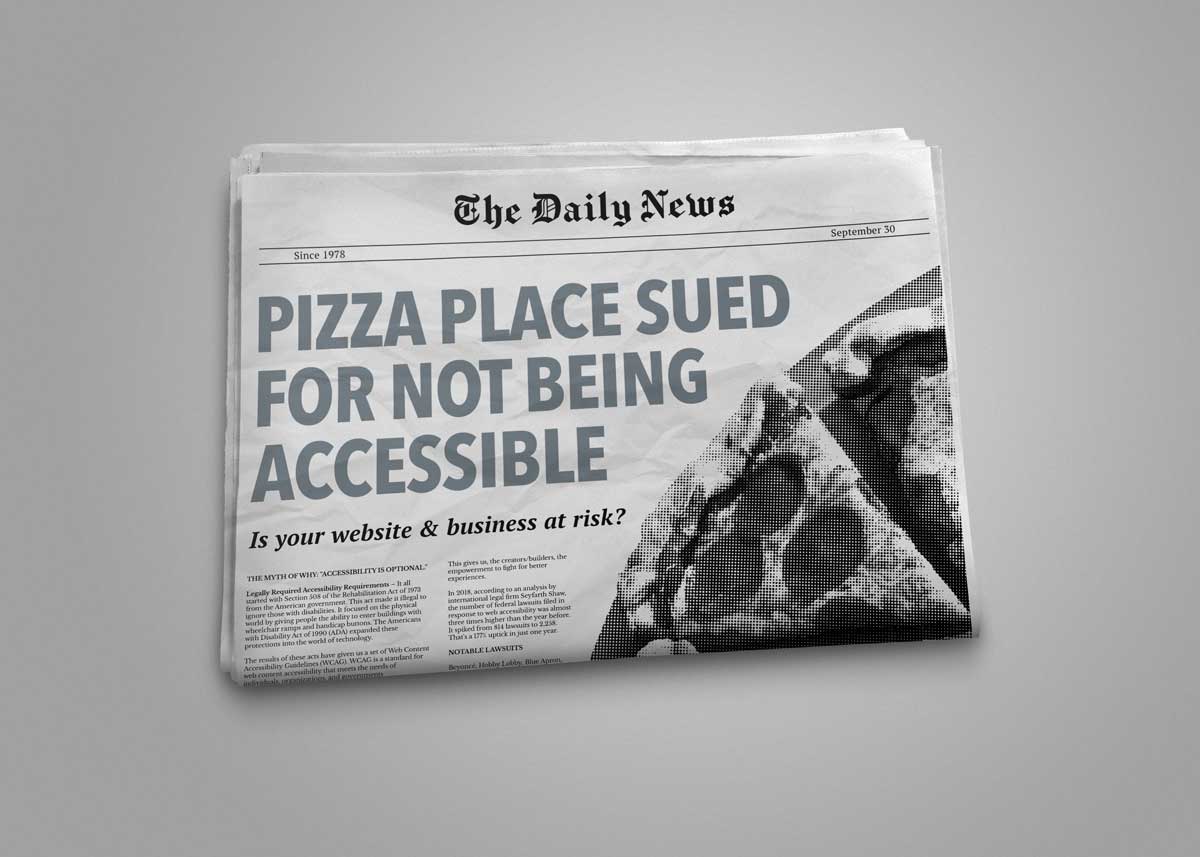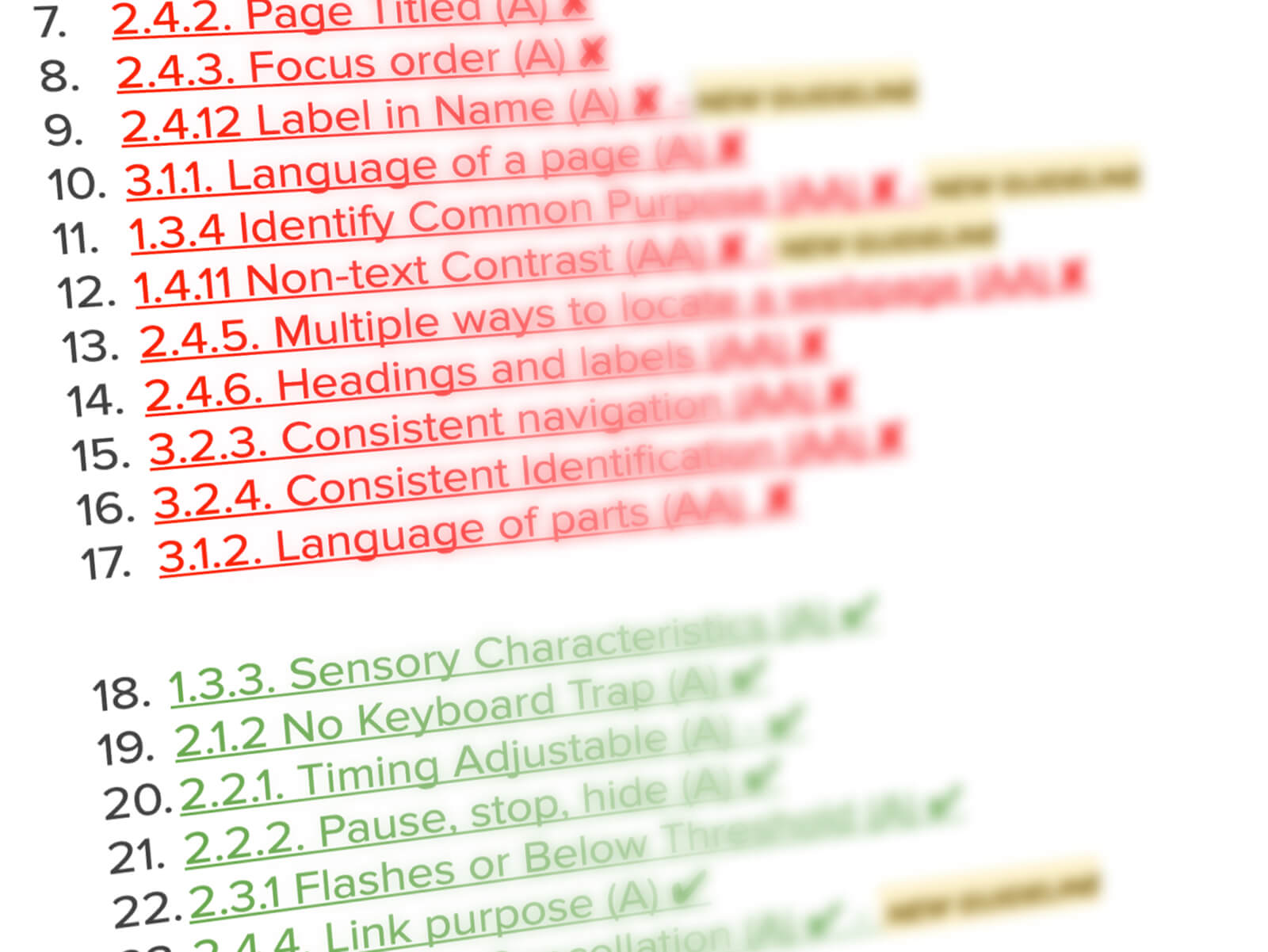Accessibility (a11y) is a hot topic in recent news, with courts ruling against websites and web applications based on the need for all audiences to be able to view and interact with the interface.
In fact, legal precedent has been in place supporting inclusion for several decades. The Rehabilitation Act of 1973, the Americans with Disability Act of 1990, and the Equality Act of 2010 have made launching a website without verifying its accessibility a risk to your business and its future.

To protect yourself from a potential lawsuit, accessibility should be factored in at all stages, not just as an afterthought. Bitovi accessibility consultants can help at any stage in the process that your project may be in.
Our accessibility experts can assist you with building accessible experiences, finding compliancy issues, and fixing the problem or providing you with a blueprint to do it yourself. Compliance is important, not only for legal matters, but also for ensuring the best experience for your users.
Accessibility is legal backing that enforces a product, device, service, or environment is available to as many people as possible. A lack of compliance is considered discrimination.
The purpose of Section 508 in the Rehabilitation Act of 1973 is to “…require Federal agencies to make their electronic and information technology (EIT) accessible to people with disabilities.”
The Americans with Disability Act of 1990 prohibits discrimination based on physical or mental disability in employment, public services, public accommodations, and telecommunications.
According to the Equality Act of 2010, having an inaccessible website is breaking the law... and breaking the law exposes businesses to expensive lawsuits.
Because of court rulings, we now have the Web Content Accessibility Guidelines (WCAG). WCAG is a standard for web content accessibility that meets the needs of individuals, organizations, and governments internationally. It is the holy grail for accessibility and is the standard we are trying to achieve.
In 2017, more than 800 US federal lawsuits were filed against allegedly inaccessible websites. That’s more than 14 times as many filings as there were in 2015.
- ADA Title lll

Web Content Accessibility Guidelines (WCAG 2.1)—a standard for web content accessibility that meets the needs of individuals, organizations, and governments internationally.
The minimum level of requirement which all websites, apps, and electronic content (such as documents) should adhere to.
Works with most assistive technology, which is now widely available on both desktop and mobile devices, or which can be purchased as a third-party installation.
Provides everything for a complete accessible offering, including all the bells and whistles.
There are over 56 million people in the United States and over 1 billion people worldwide who have a disability, and that number is growing.
Our passion for inclusive design is infectious as well as educational. Part of our goal in your accessibility review is to set you up with a good understanding for your future accessibility success. Our empathetic nature allows us to understand what drives your customers. Creating an inclusive web experience starts with thinking about and considering your audience.
Effective solutions are born from consistent testing. At Bitovi, you can rely on us to actively test throughout the process. Many of our clients come to us with a completed product in need of an accessibility review. Waiting until the end can be high risk and can result in reworking and refactoring of your product. We recommend frequent testing throughout the lifecycle of your project.

We will tailor our deliverables to best fit your scope of work and decide what works best for you.
Other firms offer a “48 hour turnaround” using automated tools. We don’t think that goes far enough.
At Bitovi, we pride ourselves in our ability to provide a thorough, manual review of your website or web application. However, if budget is a factor, we can provide a hybrid of automated and manual testing that will get your project to your choice of compliance (A, AA, AAA)—we recommend targeting a compliance level of AA or AAA.